A Sawfish is any of the five species in the Pristidae family. Researchers place four species in the taxonomic genus Pristis, and one species in the Anoxypristis genus.
Sadly, every single species is currently in danger of extinction. The IUCN lists two species as Endangered, and three as Critically Endangered. Read on to learn about the Sawfish.
Description of the Sawfish
As far as fish go, these creatures are incredibly unique. Their bodies are somewhat shark-shaped, but their pectoral, or front fins, have a flat, triangular shape to them. By far, their greatest distinguishing characteristic is their extensive “saw” or rostrum.
Though quite large, each species is slightly different in average size. The smallest species grows to a length of about 10 ft. long. Some of the largest recorded individuals reach lengths of 18 – 20 ft. long!
Interesting Facts About the Sawfish
Just looking at these creatures is interesting! Learn what else makes this group of species so unique below.
- What’s is the Saw? – First things first, what exactly is this fish’s saw? It is actually a modified rostrum or “nose.” The points of the saw are teeth growing out of either side of the rostrum.
- What Does it Do? – While they can use their spiky weapons in defense, they mostly use it to help them catch fish. Like the swordfish, this species swings its rostrum back and forth into schools of fish to stun them. Then, it swims overtop of the fish to eat because its mouth is positioned underneath its body like a stingray!
- Speaking of Stingrays – This odd assortment of fishes is actually closely related to stingrays. Their closest relatives are guitarfishes, shovelnose rays, banjo rays, and wedgefishes. However, researchers classify them in the same superorder as the rays, and the same class as the sharks!
- Saw Shark – Ironically, another group of fish in the shark family look quite similar to the Sawfish Researchers group Sawsharks with the sharks, and Sawfish with the rays. The sawsharks are usually much smaller than their ray-like cousins.
Habitat of the Sawfish
Though several different species exist, these creatures generally occupy the same types of habitats. They prefer living in shallow waters close to the coast. Their usual hunting grounds include waters less than 30 ft. deep. Most prefer living in saltwater ecosystems, but some do range into brackish and freshwater occasionally.
Distribution of the Sawfish
Each species has its own unique distribution. The Narrow, Dwarf, and Green species all live only in the Indo-Pacific Ocean. The Largetooth also inhabits the Indo-Pacific, but it also lives in the East Pacific and the Atlantic Ocean as well. The final species, the Smalltooth, lives only in the Atlantic Ocean.
Diet of the Sawfish
These fish live and hunt primarily on the seafloor. Thus, their usual prey includes benthic, or bottom dwelling organisms. Depending on the species, they commonly consume fish, crabs, shrimp, and mollusks, like clams and snails.
Their primary method of hunting prey is swinging their saw back and forth to stun it. Like sharks, these fish have electrical-sensing pores, known as “Ampullae of Lorenzini,” on their rostrum. These allow them to sense the electrical pulses from other creatures, which helps them find prey buried under the sand.
Sawfish and Human Interaction
Humans have single-handedly decimated the populations of every species of Sawfish. Several different factors have gone into the demise of these creatures. People capture them on purpose to use their fins in shark fin soup, and to sell their saws as decorations. We also accidentally capture them in nets meant for other fish, or as bycatch.
Habitat destruction and climate change both impact these creatures as well. Humans destroy the estuaries and mangroves that these creatures use to hunt for food and their young use to hide from predators. Pollution and climate change impact both these fish and their prey as well.
The IUCN lists the Narrow and Dwarf Sawfish as Endangered, and the Smalltooth, Green, and Largetooth species as Critically Endangered.
Domestication
Humans have not domesticated this creature in any way.
Does the Sawfish Make a Good Pet
No, you cannot own any of the various species as a pet. Not only do they grow incredibly large, but every individual is important for the survival of the species.
Sawfish Care
Only a few aquariums house these creatures, and even then you can only find a few species. Despite researchers’ efforts, the only species to successfully reproduce in human care is the Smalltooth. Various programs around the globe still hope to successfully implement breeding programs to save the species.
Behavior of the Sawfish
These creatures are primarily solitary, and usually only congregate to breed. Though they use their saws if threatened, they are usually quite docile and do not attack humans. The only injuries occur when people accidentally capture them in nets and the fish thrash to escape.
Reproduction of the Sawfish
Scientists do not know very much about the breeding habits of these creatures. In fact, the first successful breeding in an aquarium wasn’t until 2012! All of the various species are ovoviviparous, which means they give live birth.
Depending on the species, the gestation period lasts anywhere from several months to a year. Many species return to the same nurseries they were born when giving birth. Some species give birth to a dozen or more young per year.
Beliefs, Superstitions, and Phobias About the Sawfish
Humans have known of the existence of these fish for several thousand years. Researchers have found their rostrums in various archaeological digs and in association with religious or ceremonial artifacts. Different cultures viewed these creatures with different symbolisms.


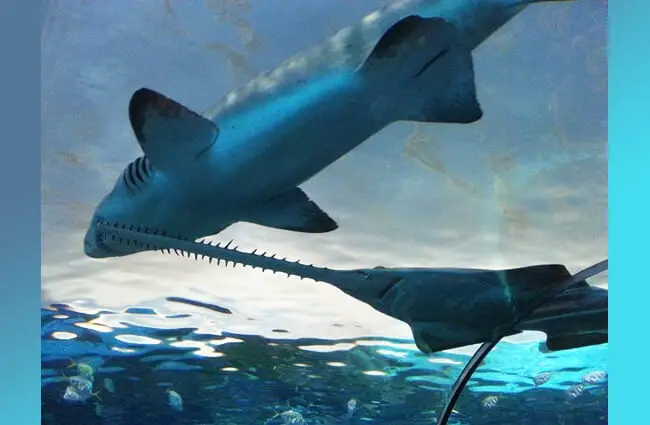
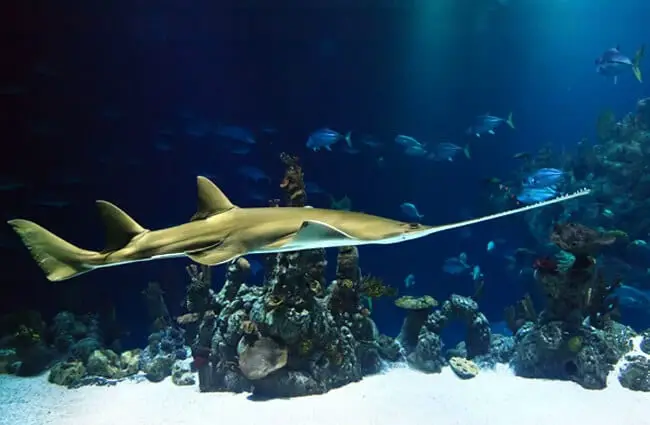
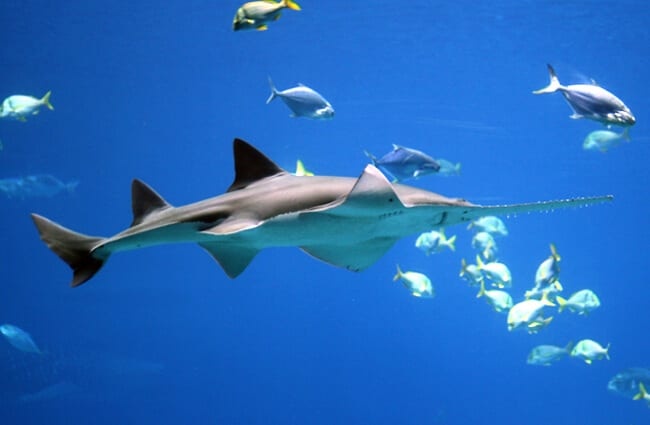

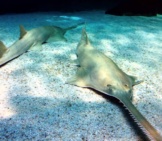



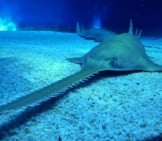
![Red Angus Closeup of a beautiful Red Angus cowPhoto by: U.S. Department of Agriculture [pubic domain]https://creativecommons.org/licenses/by/2.0/](https://animals.net/wp-content/uploads/2020/03/Red-Angus-4-238x178.jpg)












![Red Angus Closeup of a beautiful Red Angus cowPhoto by: U.S. Department of Agriculture [pubic domain]https://creativecommons.org/licenses/by/2.0/](https://animals.net/wp-content/uploads/2020/03/Red-Angus-4-100x75.jpg)

